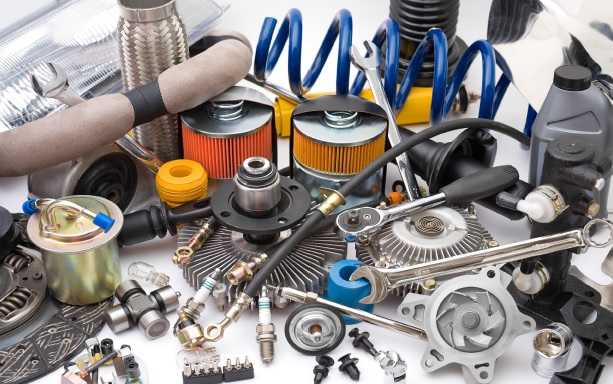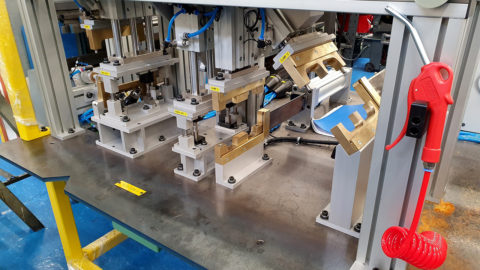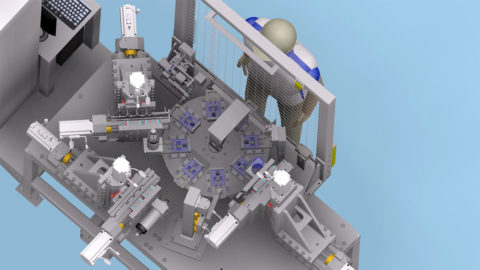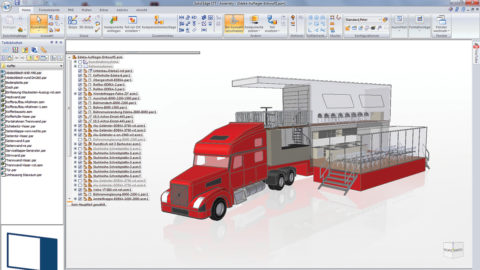
Industry Insights
Accelerate automotive aftermarket design
Solid Edge software enables manufacturers to respond to major trends impacting the automotive aftermarket.
A portfolio of solutions for product development and manufacturing
Automotive aftermarket and supply chain manufacturers need to have the flexibility to meet an increasing number of demands, including the need to react to growing and changing global demand for aftermarket and original equipment parts, the need to provide customized products and the opportunities presented by new design and manufacturing techniques. By implementing an integrated solution for product development, manufacturers can speed the product development process and stay ahead of the competition.
With 29 of the top 30 global vehicle manufacturers using Siemens Digital Industries Software solutions, automotive aftermarket and supply chain companies using Solid Edge have assurance of the highest quality data exchange with their customers.
Capabilities
Start or strengthen your digital transformation
The Siemens Solid Edge portfolio provides an excellent solution for automotive supply chain and aftermarket manufacturers who want to start or strengthen a digital transformation for their business. Solid Edge software modules enable an integrated solution for product development that leverages 3D digital models, or “digital twins.” A digital model contains data that follows product development throughout the product lifecycle, allowing the product to be optimized along the way, taking the model from concept to manufacturing.
The Solid Edge portfolio of software tools enables automotive aftermarket and supply chain companies to improve their capabilities and performance in key process areas such as design, simulation and data management, helping manufacturers:
Digitalize engineering processes. Digitalize your entire product development process and transform your business. Streamline engineering processes with 3D digital models. Add intelligence to 3D models throughout the product development lifecycle.
Improve productivity with next-generation design. Make digital representations of existing designs with reverse engineering. Use assembly modeling to manage large assemblies, up to 100,000 parts. Optimize products with generative design.
Speed mechanical design with 3D CAD. Use a history-free approach to 3D CAD with synchronous technology. Design complex parts and assemblies quickly and flexibly. Work directly with design geometry and make changes instantly.
Visualize design intent. Create photorealistic images and animations of proposed products with 3D rendering. Communicate the value of new products to potential customers. Validate design in real-world settings using augmented reality.
Integrate electromechanical design efforts. Create fully functional and manufacturable designs using industry-proven wiring and harness design capabilities. Enable seamless ECAD-MCAD collaboration for electrical and mechanical engineers.
Prepare design for 3D printing. Create products using the latest additive manufacturing and 3D printing techniques, with support for an end-to-end workflow.
Effortlessly create sheet metal models. Create 3D sheet metal models from 2D sketches. Use unique functions, such as enhanced lofted flanges and bend bulge relief, to build complex models.
Streamline access to manufacturing methods. Define and execute a wide range of traditional and new manufacturing processes including CNC machining, nesting, cutting, bending, molding, welding, assembly, and additive manufacturing.
Meet customer and regulatory requirements. Manage customer and regulatory requirements using requirements management. Make requirements easily visible to design engineers, and track fulfillment of these requirements.
Create unique products based on organic shapes using subdivision modeling technology. Use advanced capabilities for shape creation, manipulation, and analysis, with intuitive freeform modeling to create stylized shapes.
Enable paperless 3D documentation. Communicate effectively and reduce manufacturing costs using annotated 3D models rather than 2D drawings with model-based definition.
Validate product performance with scalable simulation tools that use virtual prototyping and integrated motion and vibration simulation.
Share product data over the cloud. Cloud-based collaboration with Xcelerator Share offers a secure way to share product information regardless of origin.
Simplify data re-use and migration. Simplify re-use and migration of 3D models and 2D drawings from other CAD solutions. Maintain 3D model intelligence and 2D drawing associativity in imported design projects.
Manage data, easily and securely. Search, manage and share product data securely with scalable data management solutions. Meet the needs of all manufacturers, starting with built-in data management and a growth path to Teamcenter integration.
With 3D CAD, simulation, electrical design, manufacturing and data management capabilities, Solid Edge provides an integrated portfolio of affordable and easy-to-use solutions for automotive supply chain and aftermarket manufacturers—helping you rise to new challenges.
Hall Designs finishes first with Solid Edge
Using Solid Edge with synchronous technology, Craig can design new components quickly, easily use and modify vendor CAD parts, and create realistic 3D models to share with customers—without having to create costly physical prototypes. Solid Edge also offers something else that competitive CAD products don’t—a low cost of entry subscription model, allowing him to make the jump to starting his own business without the financial risk of an upfront software purchase.
Customer Highlight
Decreasing programming errors and incorporating 4-axis machines
Automotive mechanical parts supplier uses Solid Edge and CAM to accelerate machine programming time

Challenges
- Meet greater demand for parts quality, design and manufacturing
- Fulfill clients’ requests for more geometrically complicated parts Incorporate 4- and 5-axis
- CNC machines and reprogram those machines due to small modifications in the design of parts
Keys to success
- Well-synchronized integration of CAD and CAM, allowing for programming to be modified
- Reduce machine programming time by up to 84 percent
- Correct adjustment of post-processors
- Simulate machine trajectory in G-code
Results
- Significantly accelerated programming time
- Substantially decreased the possibility of programming errors
- Incorporated 4-axis machine
- Enabled programming of machines from the CAM



